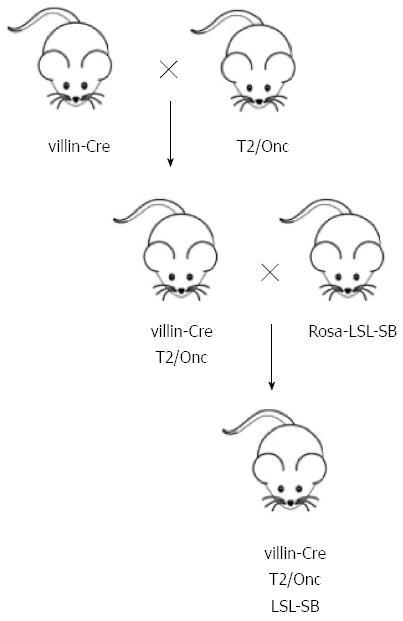Copyright
©The Author(s) 2016.
World J Gastroenterol. Jan 14, 2016; 22(2): 815-822
Published online Jan 14, 2016. doi: 10.3748/wjg.v22.i2.815
Published online Jan 14, 2016. doi: 10.3748/wjg.v22.i2.815
Figure 1 Schematic of the T2/Onc transposon.
The central viral promoter and splice donor (SD) promote the expression of candidate oncogenes. The bidirectional splice acceptor (SA) sites and polyadenylation (pA) sites allow for the disruption of candidate tumor suppressor gene expression. The inverted repeat direct repeat (IR/DR) sites (in pink) serve as binding sites for the SB transposase.
Figure 2 Breeding scheme used to generate triple transgenic mice.
Villin-Cre mice express the Cre recombinase enzyme from the gastrointestinal (GI)-specific villin promoter. T2/Onc mice carry a concatemer of T2/Onc transposons on Chromosome 1 or 15. Rosa-LSL-SB mice carry a knockin of the SB11 transposase enzyme downstream from a Lox-STOP-Lox (LSL) cassette at the Rosa locus. This design restricts T2/Onc transposition to the epithelial cells lining the GI tract.
- Citation: Clark CR, Starr TK. Mouse models for the discovery of colorectal cancer driver genes. World J Gastroenterol 2016; 22(2): 815-822
- URL: https://www.wjgnet.com/1007-9327/full/v22/i2/815.htm
- DOI: https://dx.doi.org/10.3748/wjg.v22.i2.815














